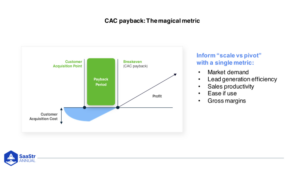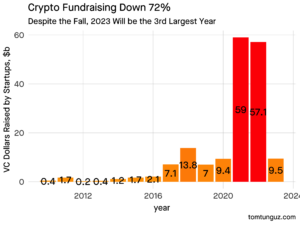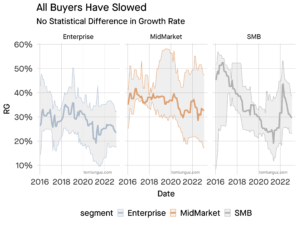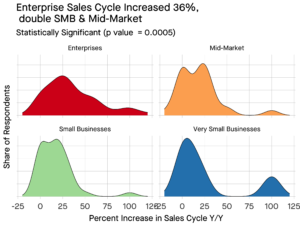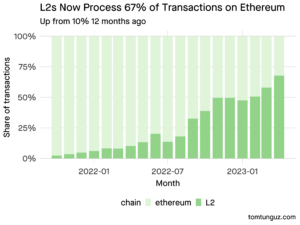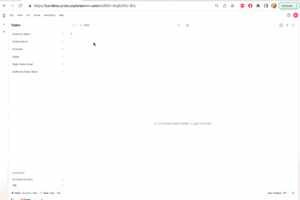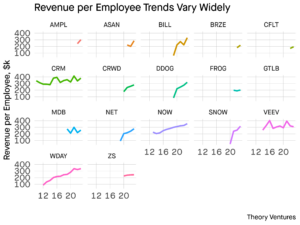Just how big is the current web3 B2B SaaS total addressable market (TAM)?
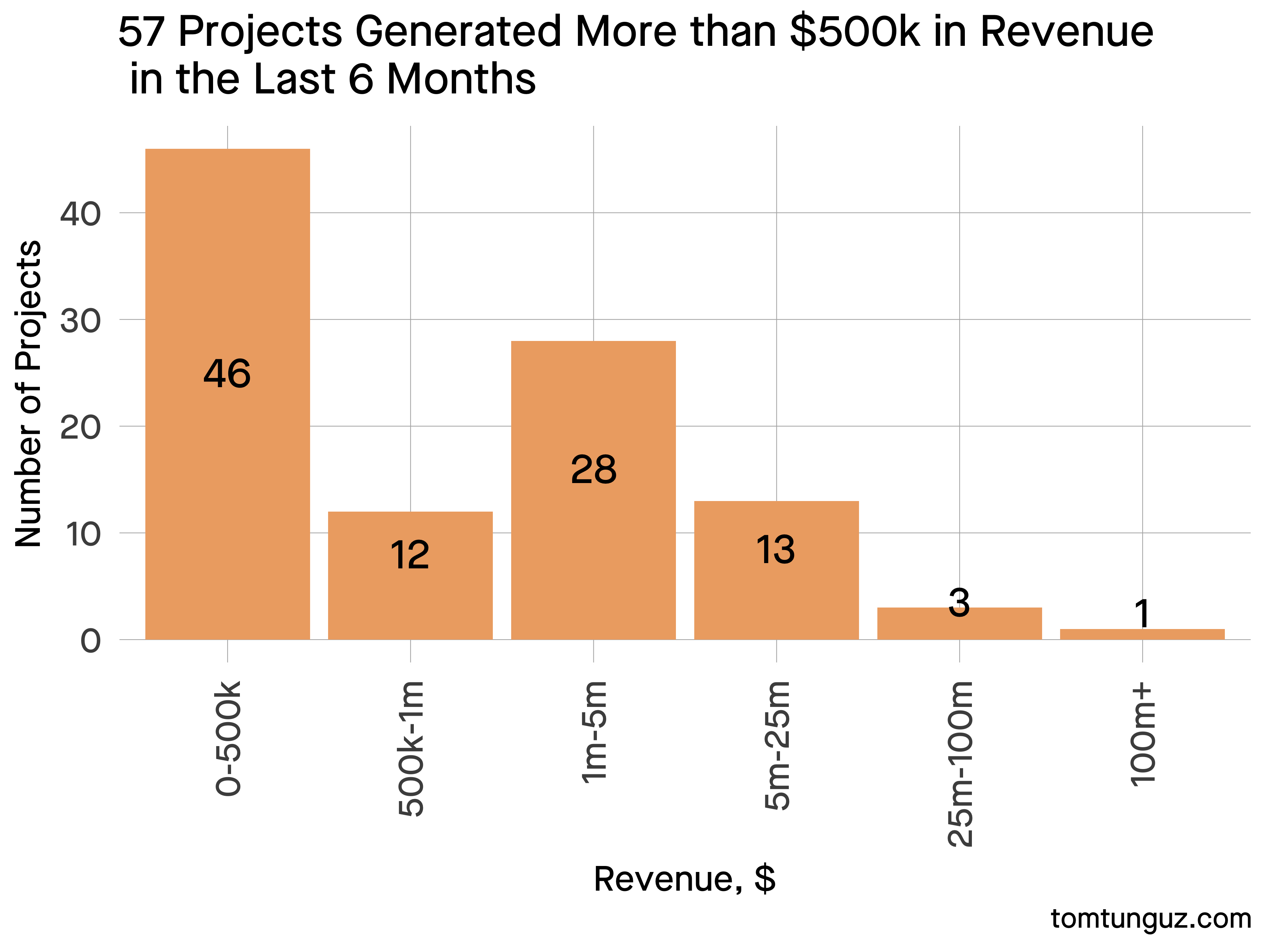
In the last six months, 103 web3 companies generated revenue on-chain, the smallest of which recorded a few hundred dollars of sales & the largest, Ethereum, tallied $401m.
44% of these companies produced less than $0.5m. But a nascent mid-market does exist : 41 companies produced between $5-25m.
| Figure | Value |
|---|---|
| Total Revenue, $M | 771 |
| % of Revenue spent on Software | 30% |
| Implied Web3 Software TAM, $M | 231 |
| Implied Web3 Software TAM (excluding Ethereum), $M | 75 |
The average software company operates at about 70% gross margin, so let’s assume a web3 company is similar. To simplify, we’ll assume the typical web3 company spends all of that cost of goods sold (COGS) on software – about 30% of revenue [1].
That implies the web3 B2B software TAM is roughly $231m in 2022 & $75m excluding Ethereum, which comprises roughly 60% of the revenue.
Web3 software sales must also navigate novel procurement processes with decentralized decision-making, payment for services in kind with tokens, & different permissions models for users.
At a 10x revenue multiple, web3 software should support about $0.75b to $2.3b in startup market cap. Depending on your view on web3 revenue growth, a 10x multiple might be high or low.
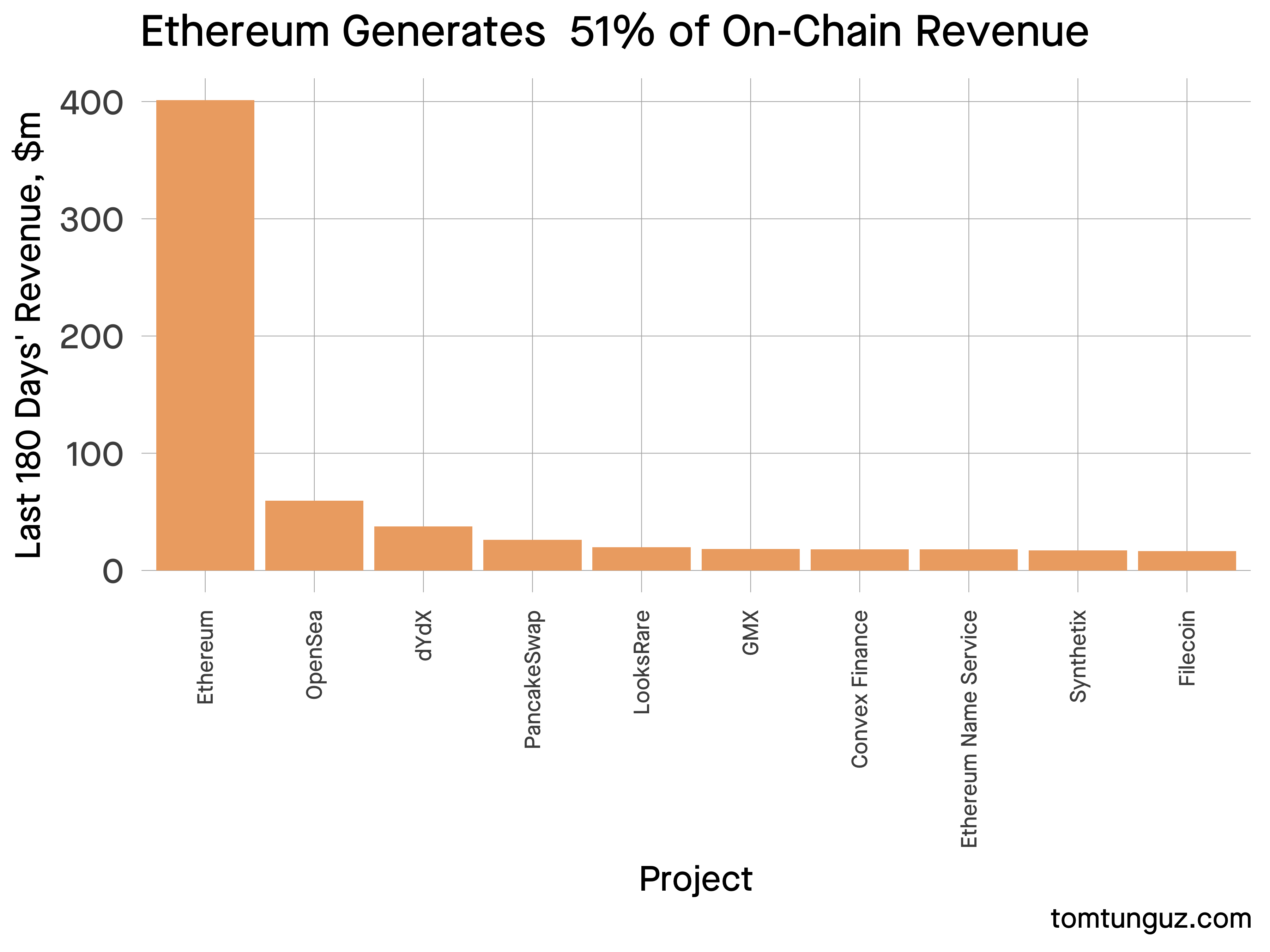
The limited number of potential customers challenges web3 vendors. With fewer than 100 accounts willing to spend $20-50k on a software contract, every interaction is precious, especially those larger accounts which dominate revenue.
To contrast with web2, Salesforce counts 150k customers in a market of about 650k who spend $57b annually. This is just the web2 CRM market.
While possible to build a business selling exclusively to web3 companies, the bigger market today is selling web3 technologies to web2 companies. Solutions in gaming, marketing, & financial services where decentralized databases or virtual wallets solve a core business need.
- This is a rough estimate. Most software companies also include customer success in COGS. Fully allocating all COGS to software is aggressive. On the other hand, the software purchased by Sales & Marketing and Research & Development teams isn’t included in that line item. So, this should be a reasonable guess.
- SEO Powered Content & PR Distribution. Get Amplified Today.
- Platoblockchain. Web3 Metaverse Intelligence. Knowledge Amplified. Access Here.
- Source: https://www.tomtunguz.com/sizing-web3-b2b-market/
- 1
- 100
- 2022
- a
- About
- Accounts
- aggressive
- All
- and
- Annually
- average
- B2B
- between
- Big
- bigger
- build
- business
- cap
- challenges
- Companies
- company
- contract
- contrast
- Core
- Cost
- CRM
- Current
- customer
- Customer Success
- Customers
- databases
- decentralized
- Decision Making
- Depending
- Development
- different
- dollars
- dominate
- especially
- estimate
- Ether (ETH)
- ethereum
- excluding
- exclusively
- few
- financial
- financial services
- fully
- gaming
- generated
- goods
- gross
- Growth
- High
- How
- HTTPS
- image
- in
- include
- included
- interaction
- Kind
- larger
- largest
- Last
- Limited
- Line
- Low
- Margin
- Market
- Market Cap
- Marketing
- mid-market
- might
- models
- months
- most
- multiple
- nascent
- Navigate
- Need
- novel
- number
- On-Chain
- operates
- Other
- payment
- plato
- Plato Data Intelligence
- PlatoData
- possible
- potential
- Precious
- processes
- Produced
- purchased
- reasonable
- recorded
- research
- revenue
- revenue growth
- roughly
- SaaS
- sales
- Sales & Marketing
- salesforce
- Selling
- Services
- should
- similar
- simplify
- SIX
- Six months
- So
- Software
- sold
- Solutions
- SOLVE
- spend
- spent
- startup
- success
- support
- TAM
- teams
- Technologies
- The
- to
- today
- Tokens
- Total
- typical
- users
- vendors
- View
- Virtual
- Wallets
- Web2
- web2 companies
- Web3
- web3 companies
- web3 company
- web3 technologies
- which
- WHO
- willing
- Your
- zephyrnet

